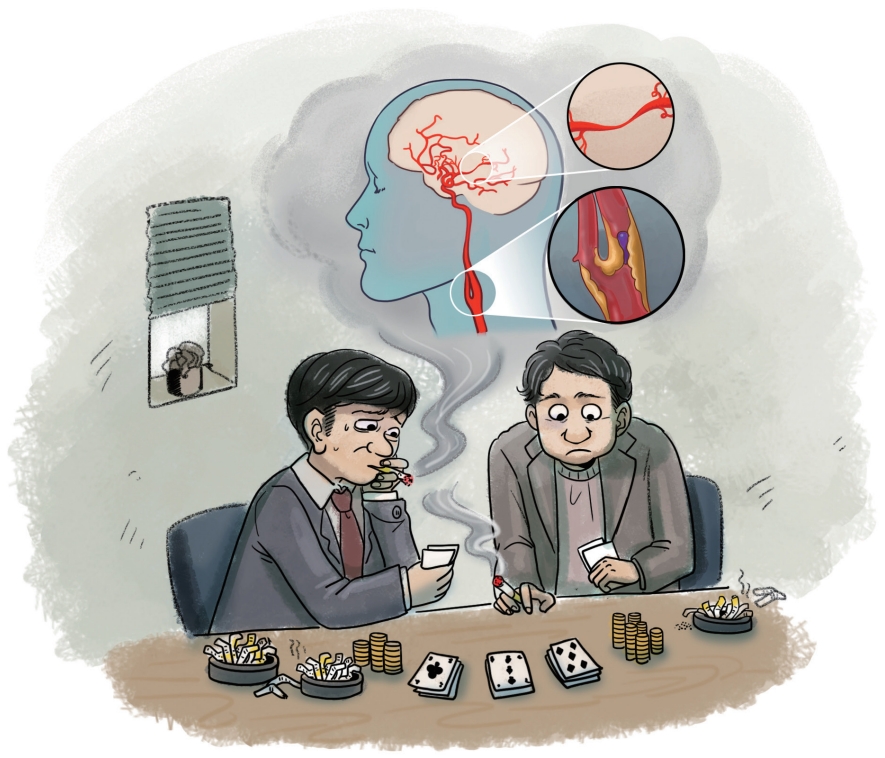Intracranial Artery Stenosis in Young Men Related to Habitual Periodic Cigarette Smoking in a Closed Space: Could It Be a New Syndrome?
Article information
Cerebrovascular disease (stroke) is decreasing in tendency and is the 4th leading cause of death in 2020 in Korea, after cancer, cardiac disease, and pneumonia, which are all increasing in tendency [1]. Racial differences between Asians and Caucasians have been suggested to explain the distribution of cerebral atherosclerosis [2]. Angiographic and autopsy studies in stroke patients have shown that Asians tend to have more intracranial vascular occlusions, whereas whites tend to have more extracranial lesions. This difference tends to be more definite and statistically significant when a single severe stenosis is present [2].
Cigarette smoking (CS) is a major risk factor for cerebral atherosclerotic disease. Intracranial atherosclerotic stenosis is thought to be more prevalent among young smokers with angiographically-confirmed symptomatic severe atherosclerotic stenosis [3]. The overall smoking rate in Korea was 20.6% in 2020 and has continuously decreased in tendency year by year [4]. Males showed a much higher rate of 34.0% than females (6.6%) in 2020. Younger males with 19–49 years of age showed a higher smoking rate, revealing that the forties showed the highest smoking rate, and then a decreasing tendency in even older males.
A study in healthy young men showed a significant decrease in cerebral flow rate after CS, especially in the anterior circulation [5]. Considering the changes in flow velocity and cross-sectional area in cerebral arteries, it could be suggested that cerebrovascular impedance increased after CS, especially at the main trunk level of the distal intracranial vessels [5].
A single intracranial artery stenosis, especially in M1 segment, has been found in the relatively young males who have been exposed to a habitual and periodic heavy smoking atmosphere in a closed space [3]. Those patients could not reveal any other specific risk factors for atherosclerosis except smoking. Habitual and periodic smoking in a closed room is often related to gambling once or twice a month, night duty at work, or overnight condolences for the deceased as with a traditional Korean funeral process (Fig. 1). Such intracranial stenotic lesions may improve after proper medication, including antiplatelet agents or even angioplasty, without requiring intracranial stenting, which was a relatively common procedure in Korea [6].
Notes
Fund
None.
Ethics Statement
No approval from IRB nor informed consent is required for this editorial.
Conflicts of Interest
DCS has been the Editor-in-Chief of the Neurointervention since 2018. No potential conflict of interest relevant to this article was reported.

